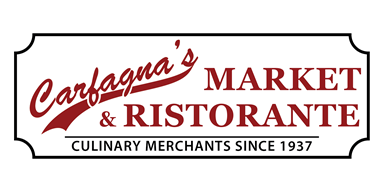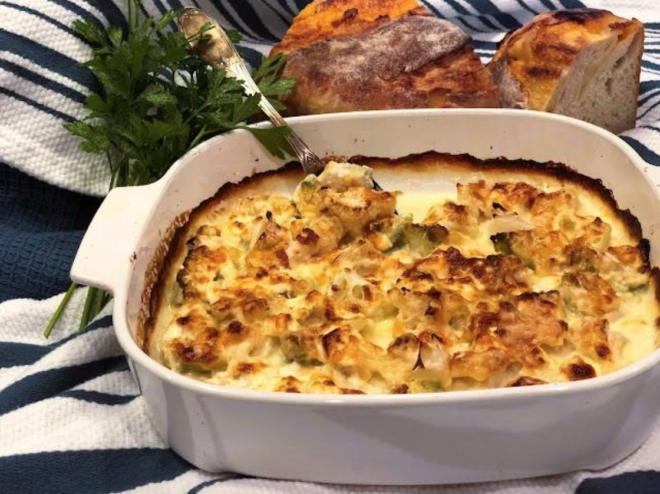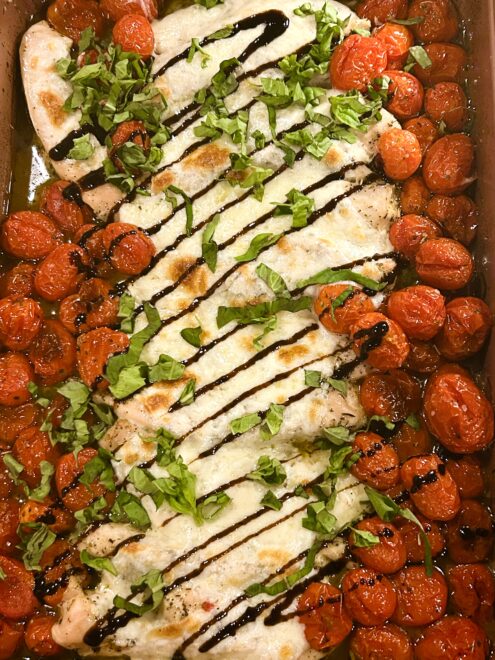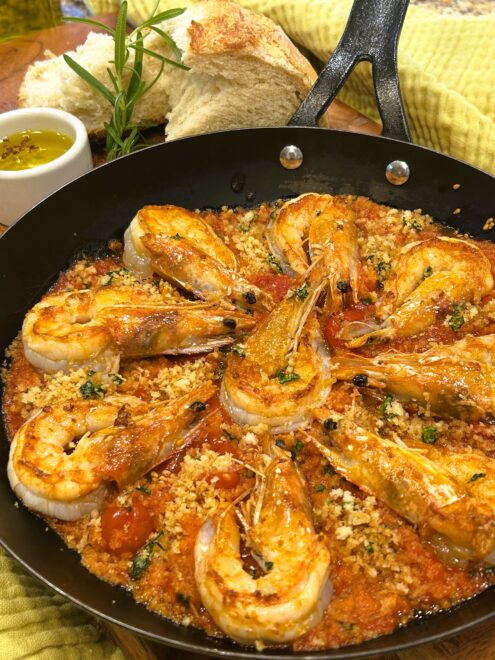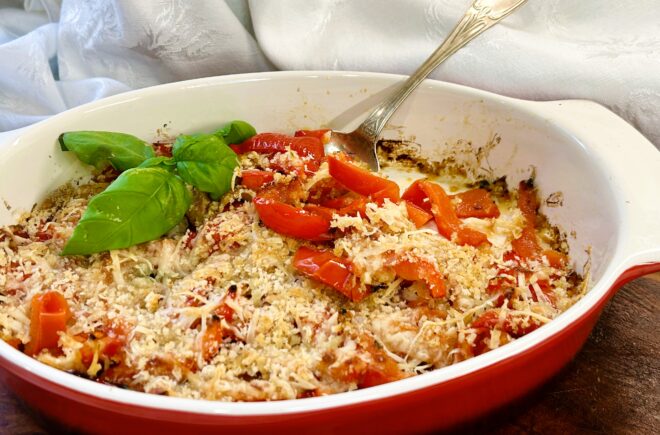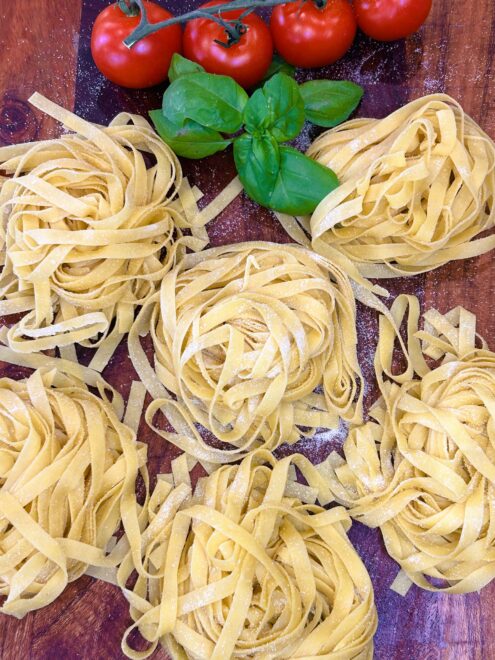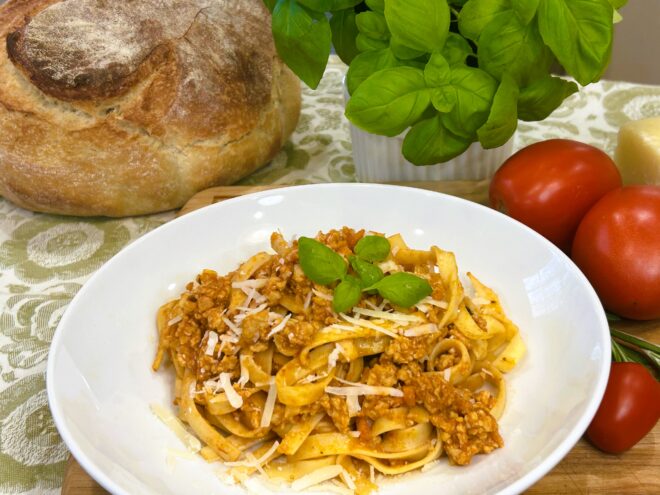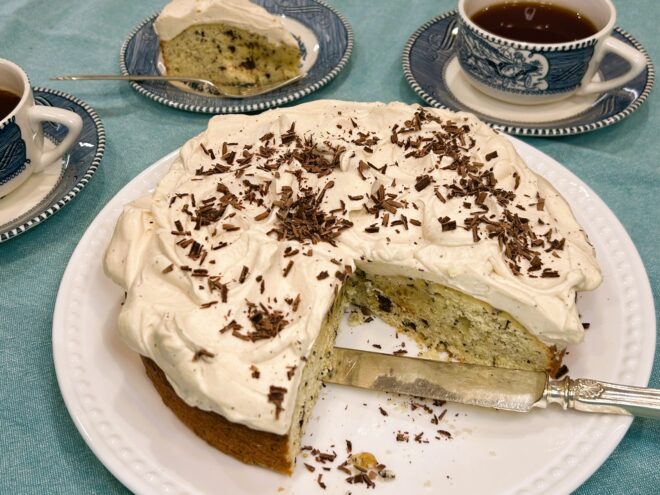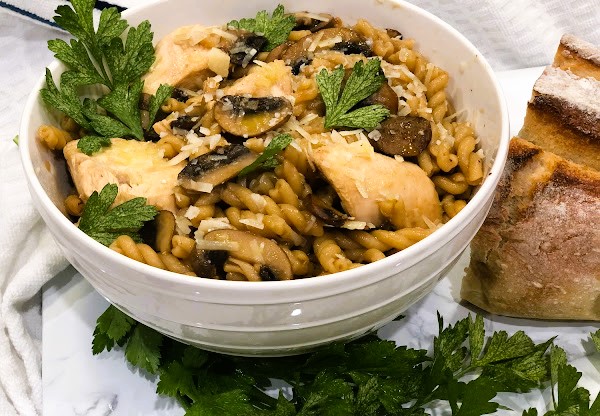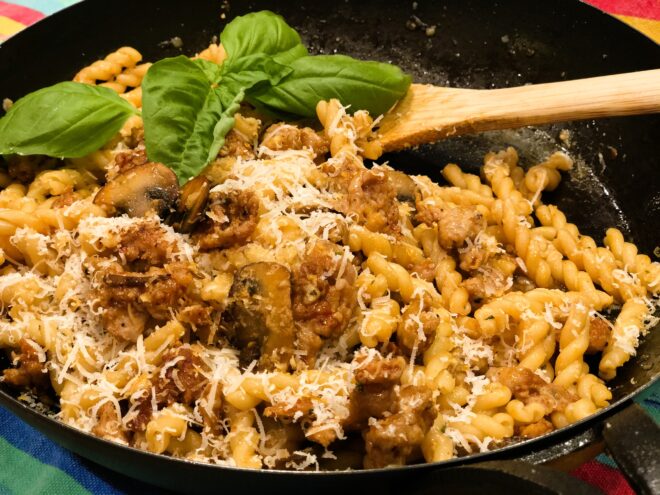
The world of pasta shapes is vast with so many shapes and sizes, each with their own purpose and intended use. Thin strands go best with lighter sauces, while long flat strands go well with a more robust sauce. Shapes with ridges will help the sauce cling to the pasta, while shells will cup the sauce. And somehow, they each taste a bit different because of the shape and the sauce each are paired with. Gemelli pasta works well with this dish. The double strand coiled together holds the sauce well, with a toothsome texture.
This recipe comes together quickly and is enjoyed by all ages. The pasta carries just a blush of color from the tomato pasta with a hint of spice from the red pepper flakes. Much of the flavor comes from the sausage so buy one that you particularly enjoy. There being so many Carfagna house made sausages to consider!
- 8 ounces gemelli pasta or similar shape
- 4 tablespoons olive oil, divided
- 8 ounces mild Italian sausage, casing removed
- 6 ounces cremini or white button mushrooms, thinly sliced
- 2 heaping tablespoons tomato paste
- 1 clove garlic, minced
- pinch of red pepper flakes
- 1/4 cup dry white wine or chicken stock
- 1 teaspoon kosher salt
- 1 tablespoon butter
- 1/4 cup grated Parmesan cheese, plus more for serving
- chopped fresh basil or parsley for garnish
Bring a large pot of water to boil. Add in the pasta, seasoning the pasta water with salt. Cook the pasta for the time specified on the package. Before draining the pasta, save 1 cup of the salted pasta water. Drain the pasta, set aside the cup of pasta water and the cooked pasta.
Meanwhile, set a large skillet over medium-high heat. Remove the casing from the Italian sausage. Add 2 tablespoons of the olive oil to the hot pan. Break up the sausage into small pieces, adding them to the hot pan. Cook the sausage pieces without stirring for about 4 minutes. Stir the sausage pieces, then add the sliced mushrooms, stirring and tossing with the sausage cooking about 3-4 minutes. Add the 2 tablespoons of tomato paste, stirring and cooking for 1 minute. Add in the minced garlic and the pinch of red pepper flakes, cooking for only 30 seconds. Carefully pour the white wine or chicken broth into the hot pan, stirring to combine.
Working quickly, add the drained pasta to the sausage mushroom mixture. Evenly sprinkle the teaspoon of kosher salt over the pasta, stirring to combine. Pour in 1/2 cup of the reserved pasta water and the tablespoon of butter, stirring to combine, coating the sausage and mushrooms. Cook for 1-2 minutes to allow the sauce to slightly thicken. Turn off the heat. Stir in the 1/4 cup of grated Parmesan. If the sauce is too thick, add in a tablespoon or more of the pasta water. Drizzle the remaining 2 tablespoons of olive oil over the pasta. Garnish with additional grated cheese and chopped fresh herbs. Serve hot.
Featured Market Ingredients
- Carfagna’s Olive Oil
- Carfagna’s Fresh Italian Sausage Links
- Gemelli Pasta
- Tomato Paste
- Parmigiano Reggiano Cheese
- Fresh Basil Leaves
